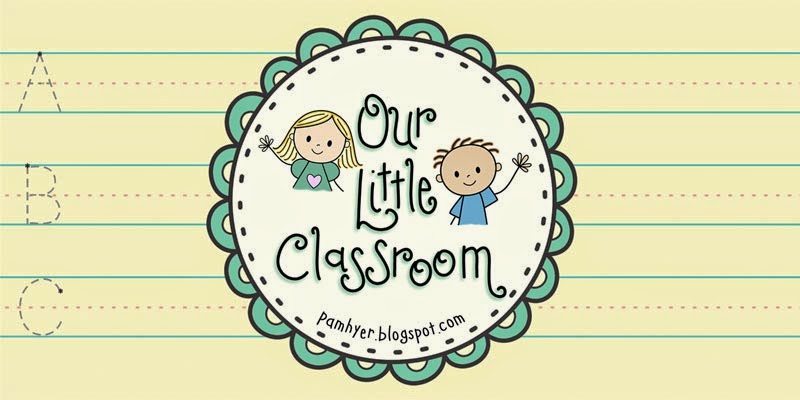Early writing progresses in stages. First, are random scribbles that bear little similarity to actual letters, yet young learners will often proudly state, "that says..."
As writing skills develop, scribbles become more defined and start to resemble letters. It is common for them to be backwards, upside-down, and randomly placed around the page. They will be different sizes and consist of curves and circles and sticks with "chimney's" or hooks attached.
Children progress in their discovery that letters have meaning through their preschool and kindergarten years. Learning the letters for their name is one of the first things children learn to truly write. However, they are often just representations of letter shapes (particularly if they learned to "write" their name very early). Frequently names are written with all capital letters (since straight lines - the primary building block of capital letters - are easier to create than curves).
Advancing writers will be able to create letters with appropriate strokes and proper sizing and awareness of space.
Early childhood teachers have their work cut out for them to train (and frequently re-train) little fingers to learn to write. It is critical to:
- Model correct letter formation. If children just look at a letter and try to recreate the shape, they can be very "creative". Demonstrate step by step and recite verbal cues (I usually use very simple prompts such as "slant down (voice sliding down too), jump, slant down, jump, go across the middle - for capital A) to help them know what to do. I like to demonstrate on the chalkboard and then have students put their fingers in the air and follow along. You can find verbal cues in many places. Sometimes, I have made up a few of my own verbal cues with more imagery, such as for lower case "e" I say, "go across the street, then go up and make a rainbow, then smile at the bottom". You can find lots of variation in many places.
- Super basic - based on Linda Dorn's, Shaping Literate Minds - HERE
- There are rhyming ones from Little Giraffe's HERE
- The HWT method here and here
- Heidi Songs are GREAT. Her website is www.heidisongs.com, and she has a free lyrics download at the bottom of the page HERE
- Encourage children to start their letters at the top. I took a workshop on the "Handwriting Without Tears" method, and they taught a little song that we recite regularly:
If you want to write a letter, start at the top.
If you want to write a letter, start at the top.
If you want to write a letter, then you'd better, better, better,
If you want to write a letter, start at the top.
If you want to write a letter, then you'd better, better, better,
Remember to start your letter at the top.
- Help students develop spatial awareness and learn about letter sizing. For example, capital letters touch the "ceiling/roof" and reach all the way down to the "floor". Some letters (g, j, p, q, y) go through the floor down to the "basement", etc.
I finally developed my own practice pages. I tried to make it fun to find and trace the letters by incorporating them into images that correlate with the phonetic sound. I included a starting point (*) so it was easier for children to be successful in forming them properly. There is also a blank space on the lines with just a starting point (*) for children to try to form the letter on their own. The worksheets have been adjusted and refined over 20 years of teaching and has proven engaging and developmentally appropriate for early writers.
Feel free to download this sample page from the handwriting packet (just click on the image below). You can find all of the handwriting pages at my TpT Store here.



No comments:
Post a Comment